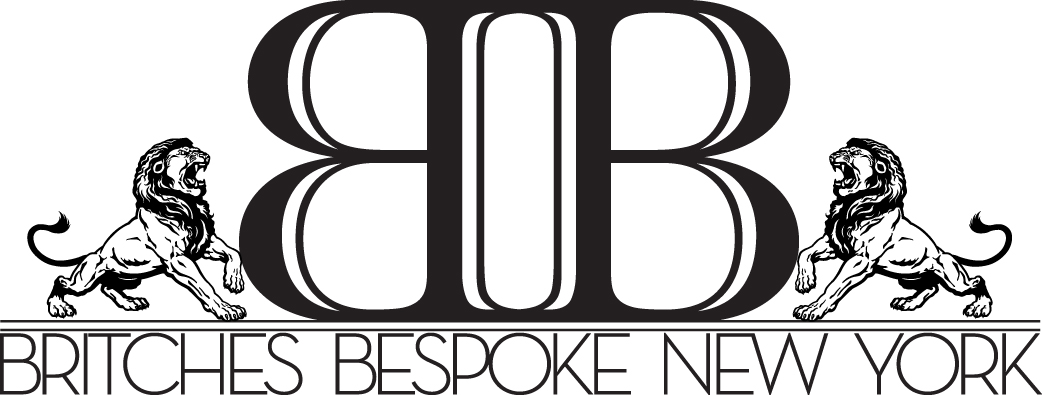Second Installment of Three by Mark Rykken
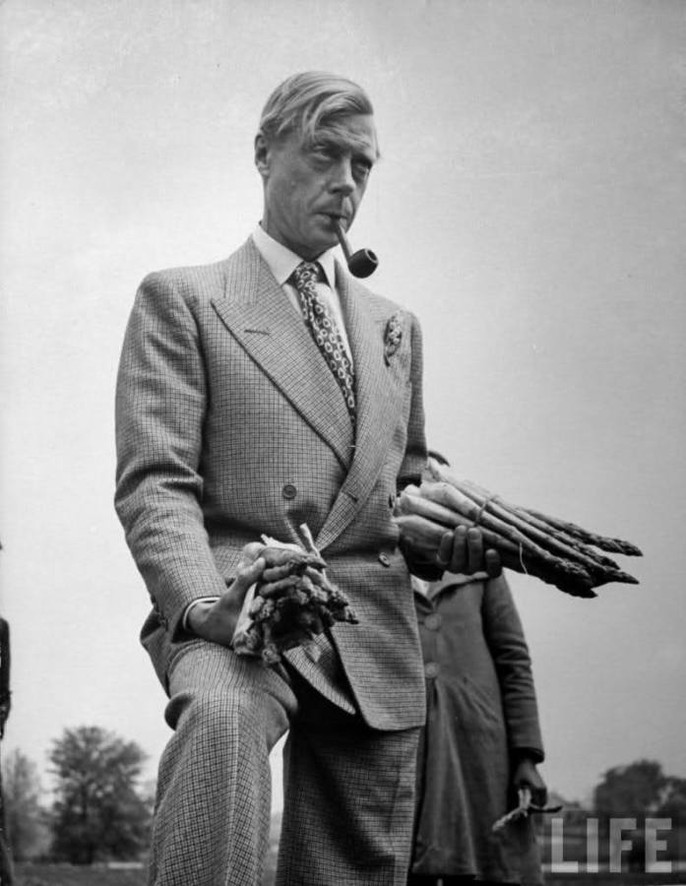
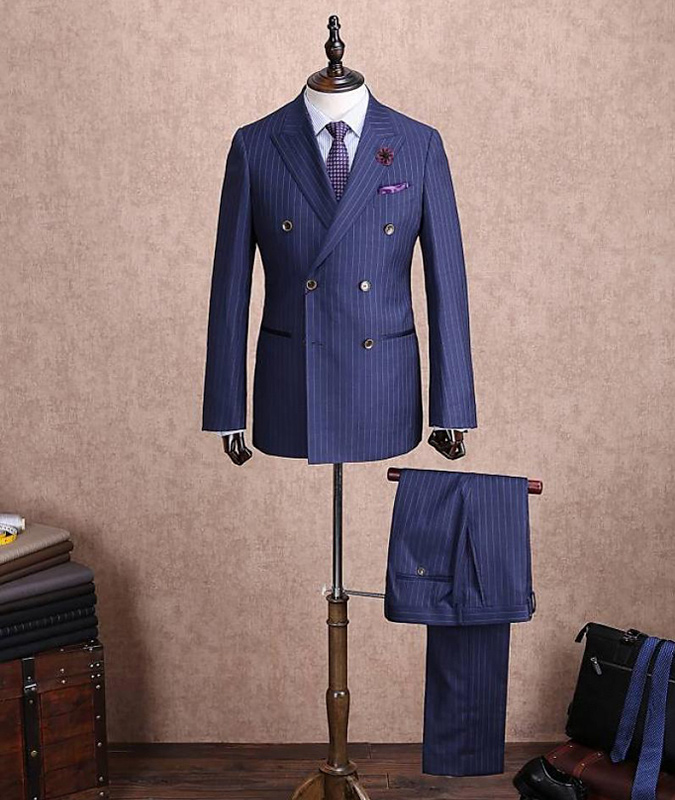
L to R: Duke of Windsor in 4x2 double breasted suit, (Source – Laneri.com), Classic 6x2 double breasted suit, (Source – Little Tailor Shop)
The most popular double breasted design was the 6-on-2 peak lapel model with side vents. The lapel was on the wider side and designed to roll to the upper button. This higher button position helped to emphasize the waist. It was also made with no vent which helped to de-emphasize the hips. The trouser was cut full so as to continue the columnar shape, lending the wearer an athletic silhouette. Another popular double breasted version was introduced in the early thirties by the Duke of Kent, and was known as the “Kent” model. It was either a 6 or 4 button front with the lapel designed to roll beyond the waist and be fastened at the bottom button. The emphasis of this design was to give the illusion of height, all of which was created by the longer lapel line. A double breasted jacket. when executed correctly not only makes a man look taller, but thinner as well. This is because the lapel line cuts across the body which helps to de-emphasize girth. Aside from these design benefits, aesthetically there is something inherently visually compelling about a well-turned out double breasted ensemble. Compared to its single breasted brethren, it projects a more sophisticated and regal appearance. This might help to explain why double breasted suits are most often favored by the English and European aristocracy. Prince Charles, the Duke of Windsor’s nephew, is a prime example. Rarely has the Prince been publicly photographed wearing anything other than a perfectly turned out double breasted bespoke suit.
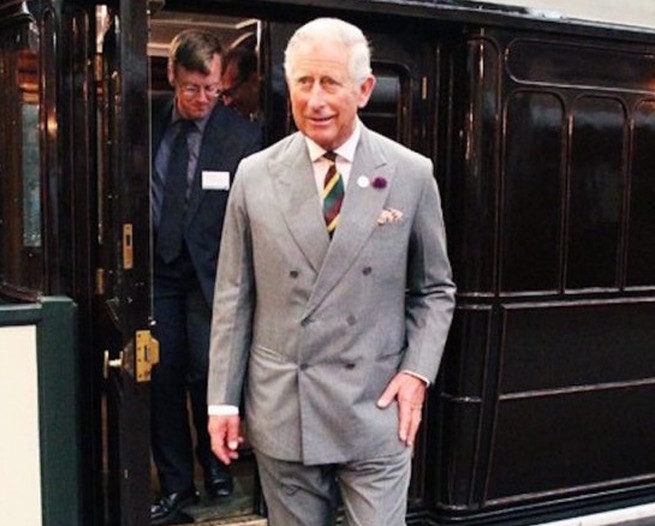
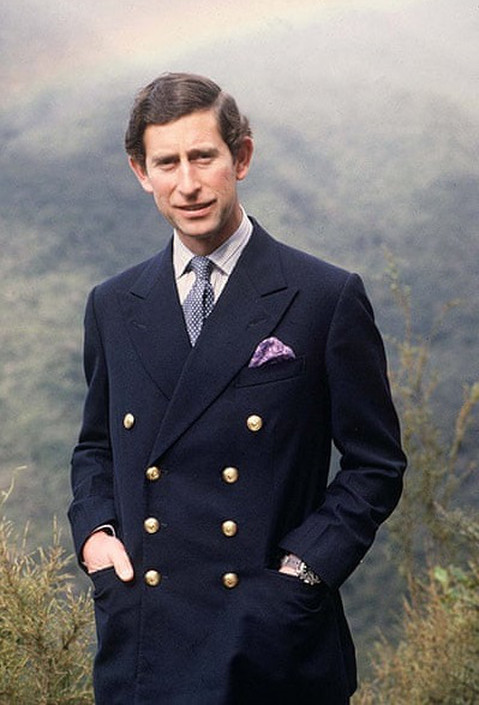
Prince Charles in a double breasted suit, then and now.
The evolution of the male suit essentially peaked with the Ivy League sack suit of the 1920’s, along with the English drape cut of the 1930’s. Between the two designs, it was the drape cut that, without question, achieved the highest level of both function and form. In fact, there has not been a suit silhouette since that will flatter more men’s body types more so than the drape cut, or variations of it. All of the unique styles that have come in and out of fashion since the 1940’s to the present have been nothing more than either re-interpretations of those two designs or a hybrid of them. A perfect example is in the mid-1960’s, when the iconic New York men’s store Paul Stuart introduced a suit model that took the natural shoulder of the sack suit and gave it a more fitted English body. This new suit model, known as the English American Cut, would dominate the American suit industry for the next 30 years.

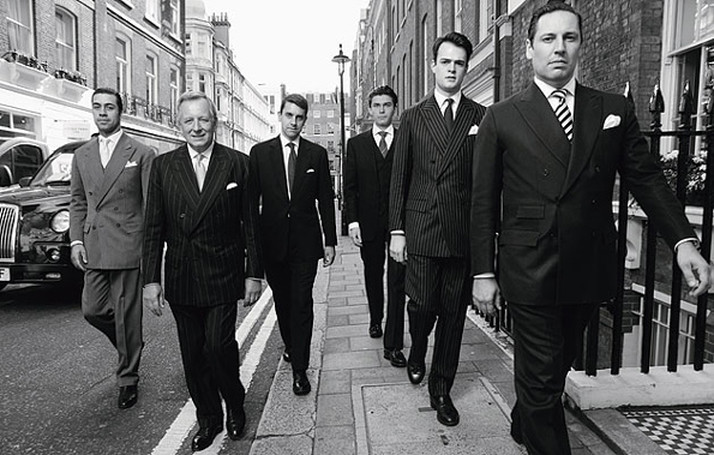
L to R: Cary Grant in a double breasted suit, 1940’s (source – Flux Magazine)
Although the double breasted suit would never match the sales numbers that it enjoyed in the 1930’s, it was still a very popular model throughout the 1940’s and even the 1950’s, which saw the return of the single breasted Ivy League Sack Suit. Double breasted suits did make a bit of a comeback in the 1980’s, a decade that would witness the full maturation and perhaps the creative peak of the so-called “menswear designer”. Designers like Ralph Lauren, Giorgio Armani, Alexander Julian and Alan Flusser were all launching 1930’s inspired clothing collections, each of which featured versions of the double breasted suit. The clear trend in menswear in the 1980’s was a return to male elegance. Two films from that decade, American Gigolo and Wall Street, best helped to illustrate this return to elegant male dress through the wardrobes worn by their respective male starts – Richard Gere and Michael Douglas. Both films did a great job in conveying how clothes can be a powerful component in enhancing one’s persona. This new found interest in men’s clothes during the 1980’s helped launch a period of tremendous growth for the menswear industry, from the high-end luxury market on down to the heavily discounted chain stores. This growth would give men more options in terms of styling, quality, and price than at any other time in the history of menswear. For the most part, the suit designs from the 80’s and 90’s returned to a state of refinement in both design and proportion, after more than a decade of the bold, exaggerated looks from the peacock era of the 60’s and 70’s. If the 1930’s was the Golden Age for menswear, than I personally believe that the 1980’s should be considered the second. The interest and growth in menswear would continue well into the 1990’s, however, as the decade was closing out, the men’s suit industry was about the confront the biggest challenge it had ever faced: casual dress in the workplace.
Visit our blog weekly for more installments of The History of the Double Breasted Suit and other men’s fashion insights.
